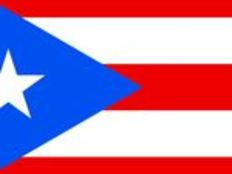
We’ve discussed the island commonwealth of Puerto Rico multiple times in the previous weeks. Part of our coverage has been to examine the overall fiscal health of Puerto Rico, or lack thereof, and what precipitating factors have led to this fiscal crisis.
For example, on June 30th, we talked about how the fiscal situation in Puerto Rico has been dire for quite some time. The fiscal troubles can be attributed to the end of corporate tax breaks in 2006, which led to the departure of many pharmaceutical and manufacturing firms, combined with the housing bust and general recession on the U.S. mainland.
We first talked about the possibility of a default by Puerto Rico in our July 17th article. While there was a chance that the government could find the money for the full payment, unfortunately this was not the case, and a first-of-its-kind default has happened. Oddly, in the end, it was more of a whimper than an epic roar, with Puerto Rico debt trading just slightly off of recent session levels.
The Default
The commonwealth defaulted on its debt by deliberately missing a payment related to the Puerto Rico Public Finance Corporation (PRPFC). The move by Puerto Rico was widely anticipated as the government had telegraphed its intent to pay only $628,000 in interest on a much larger $58 million dollar payment. Lawmakers essentially forced the default to happen as they failed to provide funds for the payment in working to close large budget shortfalls.
S&P Downgrade
A direct result of the missed payment was a downgrade of credit by Standard & Poor’s on the PRPFC’s $1 billion debt from CC to D. The downgrade focuses on the fact that Puerto Rico is obviously facing such short-term liquidity duress that the government’s decision to miss the payment is indicative of shifting priorities. The decline by the rating agency also severely limits financing options for Puerto Rico by limiting access to further lines of credit.
Other pressing news out of the island comes from a Municipal Securities Rulemaking Board filing that the government is temporarily suspending monthly payments into a fund that covers its almost $13 billion of general obligation bonds.
An Important Distinction: Appropriation Debt vs. General Obligation
From a cash management standpoint, the PRPFC bonds were an easy target for lawmakers to default on due to the fact that payments for principal and interest are made from appropriated funds if they are available. This is in sharp contrast to Puerto Rico bonds that have a general obligation pledge, or are supported by sales taxes or revenues associated with utility providers.
Appropriation debt has no legal obligation other than the willingness of lawmakers to provide funds if they are available. This sort of pledge is much weaker than a traditional general obligation pledge or a securitized lien.
What's Next?
At the current time, Puerto Rico is scheduled to present a plan by September 1st that will outline how they will handle outstanding obligations going forward. Market reaction to this latest development is mixed, with the majority of municipal analysts agreeing that the missed payment is indicative of a larger cash crunch and could signal larger losses in the months ahead. Large bond funds with exposure to Puerto Rico, such as Oppenheimer with $4.6 billion in exposure, have already engaged legal teams to try and position themselves for a protracted legal showdown over the enforceability of bond indenture terms.
The Bottom Line
What does this mean for ordinary investors? At the current time, this move by Puerto Rico was well priced into the market as evidenced by the quiet trading session following the default news. While the headline of the default is certainly sensational in nature, the story has long been in development and has proven anti-climactic at best. What is undeniable is that Puerto Rico needs a large restructuring of its debt and there will be shared pain from bondholders as haircuts and write downs of principal will be needed.






